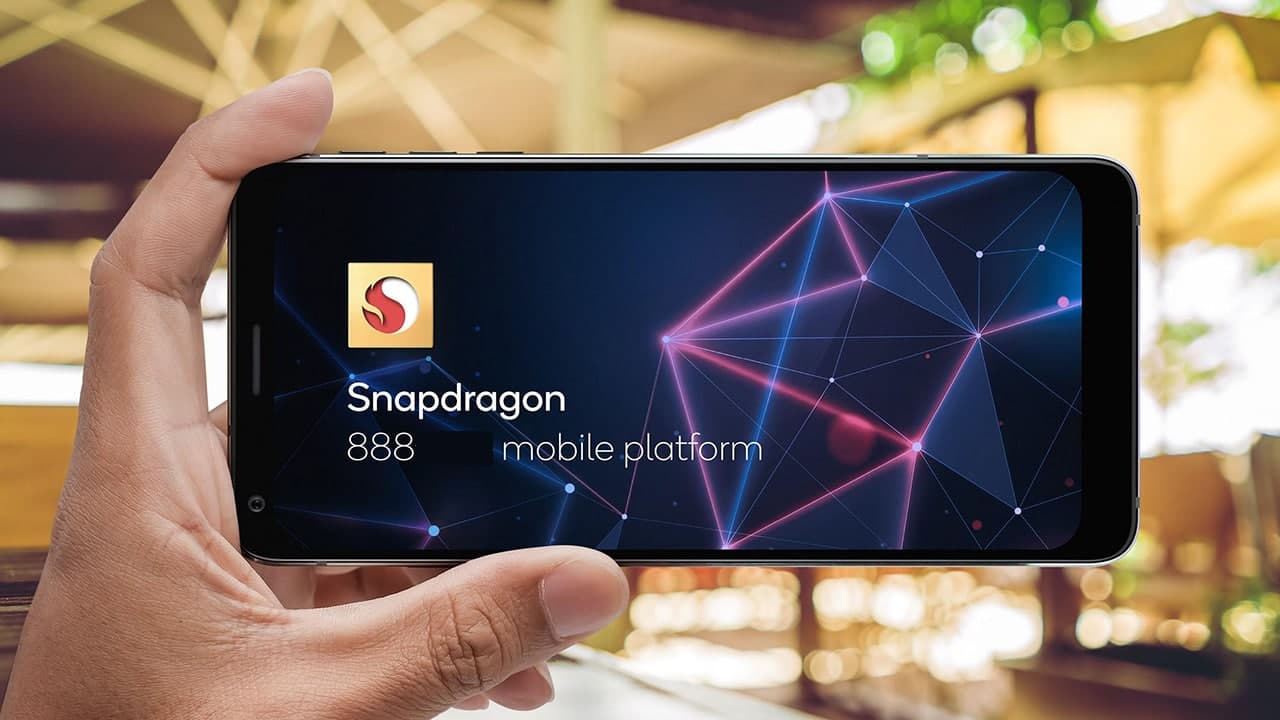Phones are becoming faster. Qualcomm revealed its newest, highest-end smartphone CPU, the Snapdragon 888 Plus, on Monday. The technology boosts the Snapdragon 888, which was introduced earlier this year in premium phones like the Samsung Galaxy S21.
Qualcomm upped the clock speed of the Snapdragon 888 Plus's CPU (the chipset's brain) to 3GHz from 2.84GHz in the Snapdragon 888. The enhancement will allow phone users to perform more heavy tasks, such as streaming video and playing games, more efficiently. In addition, Qualcomm increased its artificial intelligence capabilities by more than 20%, making video calls and entertainment more immersive.
According to Qualcomm, device makers are working on more than 130 designs that will use the Snapdragon 888 and 888 Plus. The 888 Plus will be available in smartphones beginning in the third quarter.
"It powers genuinely intelligent entertainment experiences with AI-enhanced gaming, streaming, photography, and more," stated Qualcomm's incoming CEO, Cristiano Amon, during a virtual presentation at Mobile World Congress 2021. "It's all to provide the most premium mobile experiences to flagship Android smartphones throughout the world."
While the Mobile World Congress is taking place in Barcelona this week, most large corporations have chosen to participate electronically rather than sending personnel to Spain. Qualcomm, as well as Samsung, Google, and Ericsson are among those involved. 5G is likely to be a key issue during the conference, which normally brings together executives from device manufacturers, chipmakers, networking providers, app and software developers, and a variety of other mobile-focused organizations.
The continuous advancement of 5G is more important than ever now that the coronavirus has drastically altered our planet. The next-generation cellular technology, which touts speeds up to 100 times faster than 4G and lightning-fast responsiveness, has the potential to revolutionize everything from simple video conferencing to medical and complex augmented and virtual reality. Few phones have been released in the United States this year that do not support 5G, and the ultra-fast, millimeter-wave version has become standard in handsets such as Apple's iPhone 12 series. While many people already have 5G phones, there is yet to be a "killer app" that demonstrates what the network can truly achieve.
Amon spent most of his MWC speech, which Qualcomm showed reporters ahead of the event, discussing Qualcomm's attempts to extend 5G beyond the phone. Cellular technology developed by the business is currently utilized in PCs, vehicles, smart internet of things devices, fixed wireless goods, and infrastructure to power 5G networks.
"Qualcomm is really... capitalizing on the potential that we now have for our technology to move beyond mobile," Amon stated during a press conference ahead of the MWC.
Qualcomm also revealed its second-generation 5G RAN technology for small cells with the Snapdragon 888 Plus. The technology will allow mmWave to be used in more areas, both inside and outdoors, as well as in new locations throughout the world. It will also bring additional lower band 5G capabilities in public and private networks, as well as tiny cell densification. Qualcomm's new 5G DU X100 Accelerator Card will enable operators and infrastructure providers to benefit from 5G's high performance, low latency, and power efficiency.
In terms of phones, Qualcomm stated that more than 35 operators and device manufacturers from across the world have committed to supporting mmWave. Although the technology offers extremely high speeds, it is not as dependable as 5G mid- and low-band variants. It can only go limited distances since it is obstructed by trees, windows, and other objects.
Verizon has been the most vocal supporter of mmWave, whereas practically all other providers across the world have supported slower but more dependable forms of 5G. Even in the United States, mmWave is only found in densely populated areas or in venues like sports arenas. However, Qualcomm stated that the mmWave footprint should improve.
"5G mmWave is often seen as a highly US-centric technology," Ignacio Contreras, Qualcomm senior director of product marketing, stated during a press conference ahead of MWC. "However, if you look at the mix of these corporations clearly announcing their support... this is far from a US-centric image."
Qualcomm stated that connections will be available in China, Europe, Japan, Korea, North America, and Southeast Asia. China Unicom intends to deploy mmWave for the 2022 Winter Olympics in Beijing, while Oppo intends to deliver 5G mmWave devices "in the near future," maybe as early as next year, according to Contreras.




Comments (0)